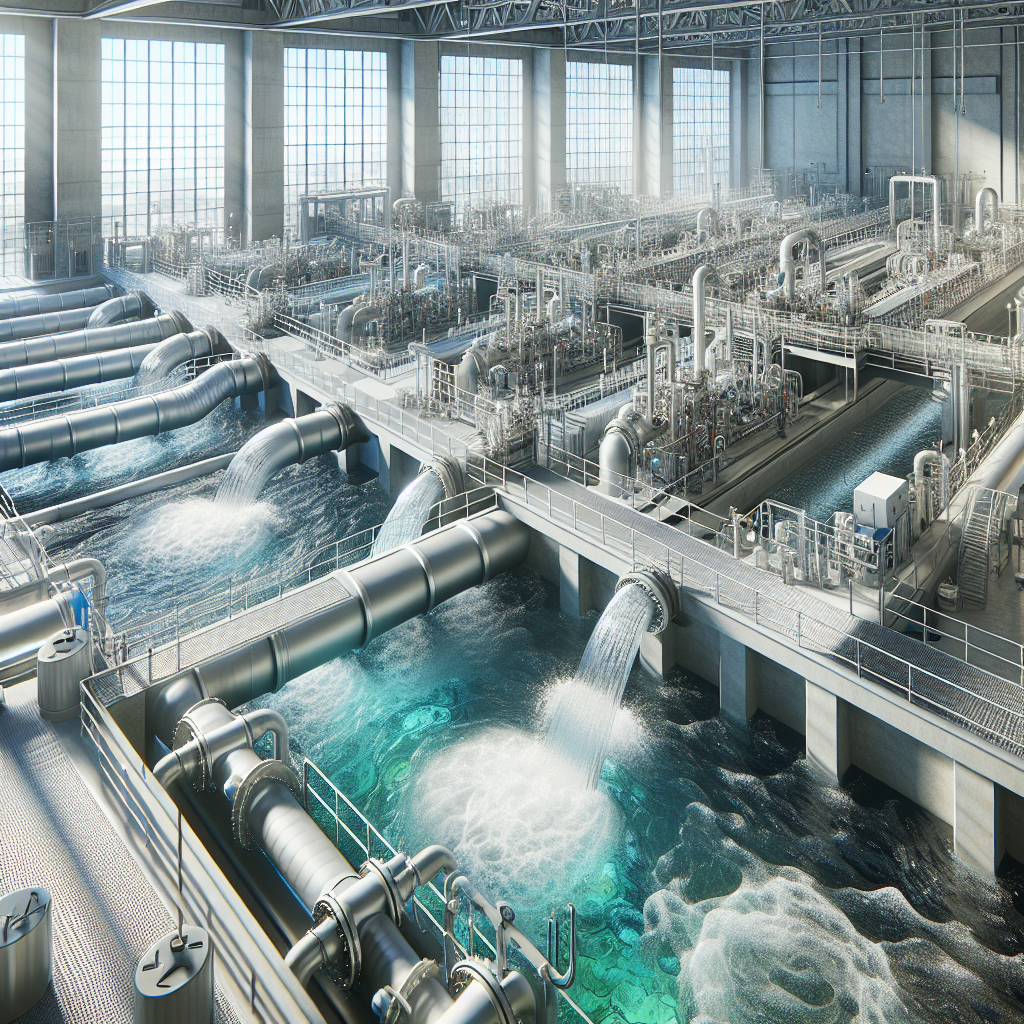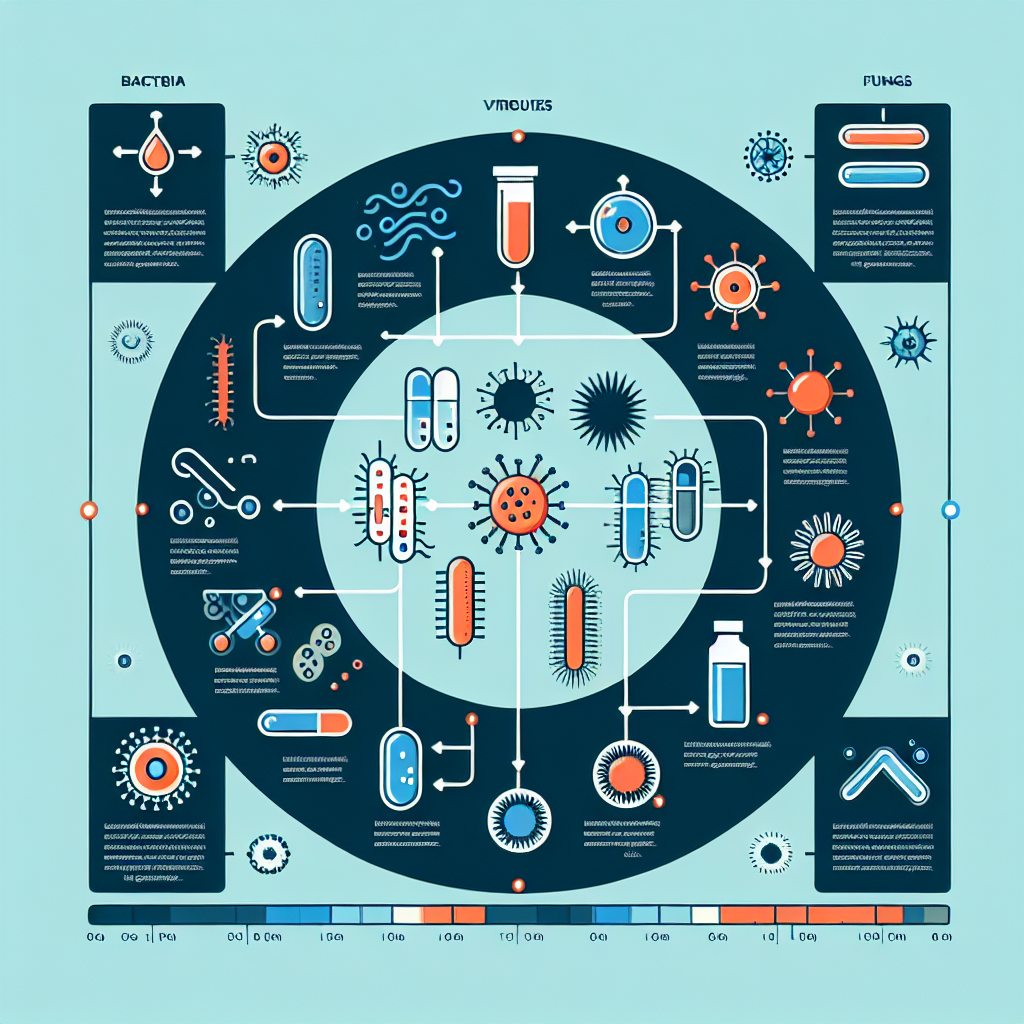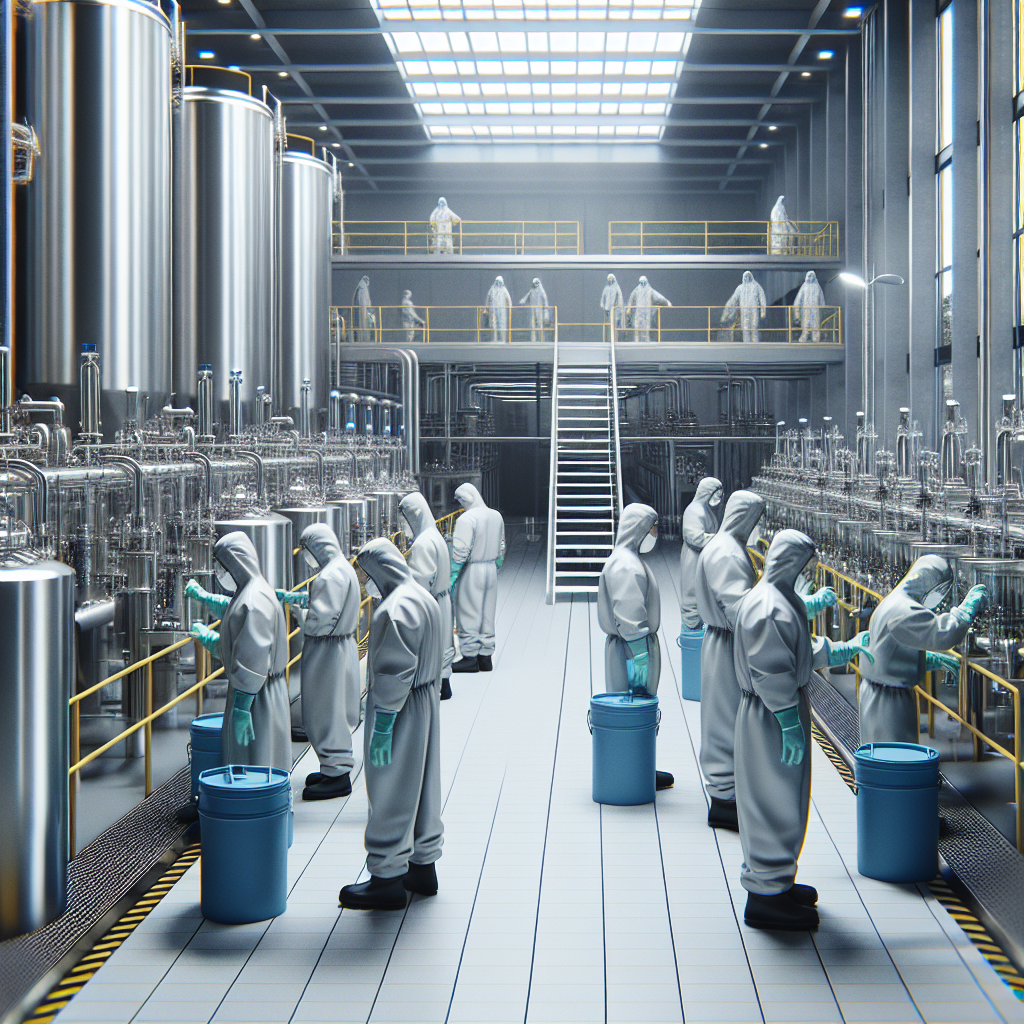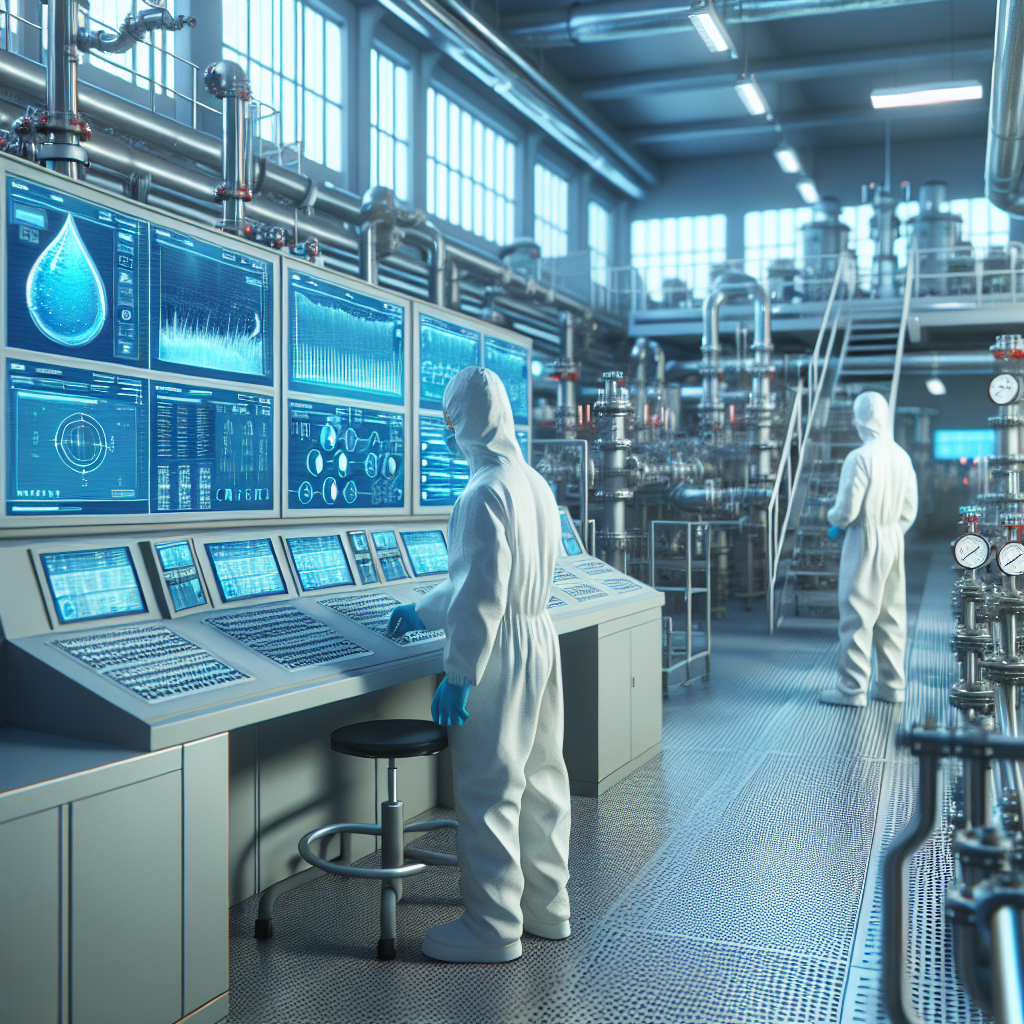Preventing and Managing Biological Contamination in Water Systems
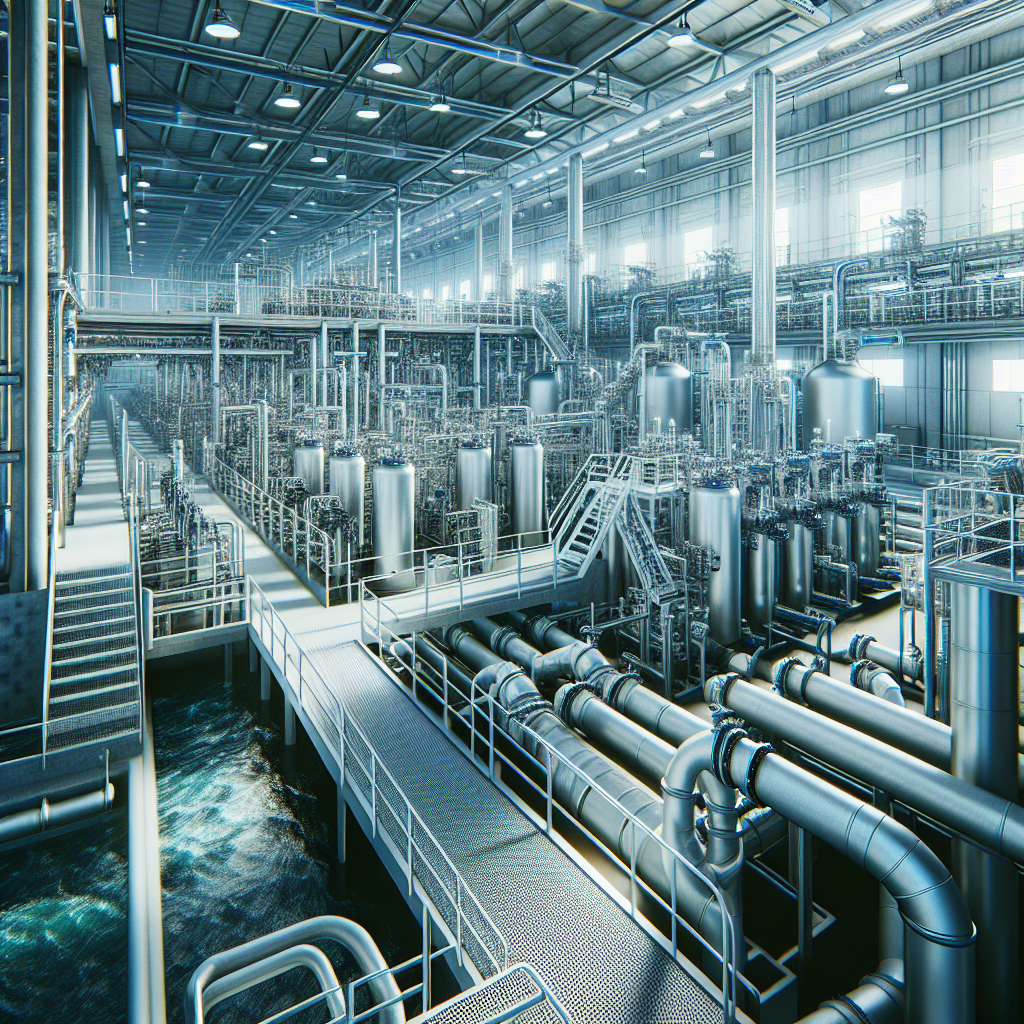
Preventing and Managing Biological Contamination in Water Systems
Introduction
Welcome to the wild world of water systems, where the stakes are high and the contaminants are lurking! In an age where biological contamination is a hot topic, understanding how to prevent and manage these invisible foes is crucial. Think of it as a game of Whac-A-Mole, but instead of moles, we’re dealing with microbial hazards like bacteria, viruses, and fungi that can wreak havoc on public health.
Biological contamination in water systems is not just a nuisance; it’s a serious threat that can lead to outbreaks of diseases caused by pathogen contamination. According to the CDC, around 48 million people fall ill each year due to foodborne pathogens alone. That’s roughly 1 in 6 Americans! So, if you think your water system is safe from these pesky biological pollutants, think again.
In this post, we’ll dive deep into the murky waters of biological contamination. We’ll explore everything from the types of contaminants you might encounter to effective contamination control methods. Whether you’re an engineer designing treatment facilities or a wastewater operator on the front lines, this guide will arm you with the knowledge needed to tackle those sneaky infectious agents head-on.
So grab your safety goggles and let’s get started on this journey toward cleaner water systems and better public health!
Understanding Biological Contamination
Let’s dive into the murky waters of biological contamination. This term encompasses a variety of unwelcome guests in our water systems, including pesky microbes and disease-causing organisms that can wreak havoc on public health. So, what exactly is biological contamination? Buckle up, because it’s a wild ride!
Definition of Biological Contamination
Biological contamination refers to the presence of harmful microorganisms think bacteria, viruses, fungi, and other biological pollutants in water. These contaminants can originate from various sources and can pose serious risks to human health and the environment.
Types of Biological Contaminants
- Bacterial contamination: Often caused by pathogens like E. coli or Salmonella, these little critters can lead to serious gastrointestinal issues.
- Viral contamination: Viruses such as Norovirus or Hepatitis A can hitch a ride in contaminated water and cause widespread outbreaks.
- Fungal contamination: Fungi like mold or yeast may not be as notorious as their bacterial cousins but can still compromise water quality.
- Pathogen contamination: This includes a cocktail of foodborne pathogens that can lead to severe illness when ingested through contaminated water.
Sources of Contamination in Water Systems
The sources of biological contaminants are as varied as they are concerning. Here are some common culprits:
- Sewage discharge: Overflowing sewers can introduce a buffet of pathogens into our water systems.
- Agricultural runoff: Pesticides and fertilizers may contain harmful microorganisms that wash into waterways during rain.
- Zoonotic diseases transmission: Animals can be carriers for various pathogens, which may find their way into human drinking supplies.
- Poor sanitation practices: Inadequate hygiene protocols in wastewater treatment plants can lead to rampant biohazard contamination.
Fun Fact: The World Health Organization estimates that 2 billion people use drinking water contaminated with feces, leading to diseases like cholera and dysentery!
The key takeaway here is that understanding biological contamination is crucial for implementing effective strategies to ensure clean and safe water. By identifying the sources and types of these contaminants, municipalities and engineers can develop robust plans for risk assessment and mitigation. So let’s gear up for some serious cross-contamination prevention!
Microbial Contamination: Types and Impacts
Microbial contamination is like that uninvited guest at a party who just won’t leave. It comes in various forms, each with its own unique flair for causing trouble in our water systems. Understanding these types is crucial for effective biological contamination management.
Bacterial Contamination
Bacteria are the life of the party literally! While many bacteria are harmless or even beneficial, some can be downright dangerous. For instance, E. coli and Salmonella are notorious for causing foodborne illnesses. In water systems, these pesky little critters can lead to serious health risks if not properly managed.
Viral Contamination
Viruses are the stealthy ninjas of microbial contamination. They can infiltrate water supplies without a sound. Common culprits include norovirus and hepatitis A, both of which can wreak havoc on public health. It’s essential to implement rigorous water quality monitoring for pathogens to keep these viral villains at bay.
Fungal Contamination
If you thought bacteria and viruses were bad, wait until you meet fungi! From mold spores to yeasts, fungal contamination can lead to significant issues in both water and food systems. Fungi thrive in moist environments, making them a common problem in wastewater treatment facilities if proper sanitation protocols aren’t followed.
Pathogen Contamination and Foodborne Pathogens
The intersection of pathogen contamination and foodborne pathogens is where things get really messy (and dangerous). When water sources become contaminated with harmful pathogens, it poses a serious risk not just to drinking water safety but also to agricultural practices that rely on clean water for irrigation. Effective cross-contamination prevention strategies are vital here!
Key Takeaway: Each type of microbial contamination presents distinct challenges that require tailored approaches in monitoring and management. Implementing robust sanitation protocols and hygiene practices is essential to mitigate these risks.
In summary, understanding the various forms of microbial contamination helps municipalities and wastewater treatment operators develop effective strategies for safeguarding public health. By knowing what you’re up against whether it’s sneaky viruses or troublesome fungi you can implement better biological hazard management measures today!
Identifying Biological Hazards in Water Systems
Understanding and identifying biological hazards in water systems is like being a detective in a mystery novel. You need to gather clues, analyze evidence, and connect the dots to prevent biological contamination from turning into a full-blown crisis.
First off, let’s talk about common biological pollutants. These are the sneaky little culprits that can wreak havoc on public health. Here are some of the main offenders:
- Bacteria: Think E. coli and Salmonella these guys can cause serious gastrointestinal issues.
- Viruses: Enteric viruses like norovirus can spread like wildfire through contaminated water.
- Fungi: Fungal pathogens may not be the first thing that comes to mind, but they can also contribute to health risks.
- Protozoa: Giardia and Cryptosporidium are notorious for causing outbreaks linked to water supplies.
Did you know? According to the World Health Organization, over 2 billion people globally use a drinking water source contaminated with feces, leading to significant health risks!
Risk Assessment in Biology Labs and Water Systems
A robust risk assessment is essential for identifying potential hazards. This involves evaluating factors such as:
- The source of water supply surface water vs groundwater
- The presence of industrial discharges or agricultural runoff
- The effectiveness of existing sanitation protocols
Microbial Testing Methods for Water Quality Monitoring
No detective work is complete without the right tools! Microbial testing methods are crucial for monitoring water quality and identifying biological hazards. Here are some popular techniques:
- Culturing: Growing microorganisms from samples to identify specific pathogens.
- Molecular methods: Techniques like PCR (Polymerase Chain Reaction) allow for rapid detection of microbial DNA.
- Immunological assays: These tests use antibodies to detect specific pathogens quickly and accurately.
If you’re not already using these methods, it’s time to level up your game! Regular microbial testing can help catch problems before they escalate into larger issues, ensuring safe drinking water for everyone.
The bottom line? Identifying biological hazards in your water systems is crucial in preventing biological contamination. By staying vigilant and employing effective risk assessments along with rigorous testing methods, you can safeguard public health against these invisible threats!
Contamination Control Methods and Strategies
When it comes to tackling biological contamination, you need a game plan that’s more robust than a superhero’s cape. Think of it like assembling the Avengers, but instead of saving the world, you’re saving water systems from the clutches of microbial villains!
Sanitation Protocols and Hygiene Practices
First up, let’s talk about sanitation protocols. These are your first line of defense against the onslaught of pathogen contamination. Implementing strict hygiene practices in water treatment facilities is crucial. This means:
- Regular cleaning schedules for all equipment and surfaces.
- Use of appropriate disinfectants that target a wide range of biological pollutants.
- Training staff on hygiene practices to minimize cross-contamination risks.
Sterilization Techniques and Decontamination Procedures
Next, we have sterilization techniques. Think of these as the ultimate power-up for your water treatment process! Here are some methods:
- Heat Sterilization: Boiling or using autoclaves to eliminate infectious agents.
- Chemical Sterilization: Utilizing strong disinfectants like chlorine or ozone to tackle those pesky microbes.
- Filtration: Employing microfiltration or ultrafiltration membranes to physically remove contaminants.
Cross-Contamination Prevention Measures
No one wants uninvited guests crashing their party, especially when those guests are disease-causing organisms! Here’s how to keep your systems safe from cross-contamination:
- Create dedicated zones for different operations within treatment facilities.
- Implement strict access controls to prevent unauthorized personnel from entering sensitive areas.
- Regularly monitor equipment and processes for signs of contamination and act swiftly if detected.
Key Takeaway: A multi-faceted approach combining sanitation, sterilization, and prevention measures is essential in managing biological hazards effectively. Remember, an ounce of prevention is worth a pound of cure!
Biosecurity Measures in Water Treatment Facilities
When it comes to biological contamination, water treatment facilities are on the front lines, battling an invisible enemy. The stakes are high, and so are the measures that need to be in place to keep our water safe and clean. Let’s dive into some essential biosecurity measures that can help mitigate the risks associated with pathogen contamination and other biological hazards.
Biosafety Guidelines for Handling Hazardous Biological Agents
First things first: establishing robust biosafety guidelines is non-negotiable. These guidelines serve as the playbook for dealing with hazardous biological agents, ensuring that everyone from operators to engineers knows how to handle these potential threats effectively. Here’s what to focus on:
- Personal Protective Equipment (PPE): Always wear appropriate PPE, including gloves, masks, and protective clothing. Think of it as your superhero suit against microbial hazards!
- Access Control: Limit access to sensitive areas within the facility. Only trained personnel should enter zones where biological agents are present.
- Training and Drills: Regular training sessions and emergency drills can prepare staff for potential contamination events. After all, practice makes perfect!
Disease-Causing Organisms Management Strategies
Next up is managing those pesky disease-causing organisms. Implementing effective management strategies can significantly reduce the risk of outbreaks caused by biological pollutants:
- Regular Monitoring: Conduct routine water quality monitoring for pathogens using advanced microbial testing methods. This proactive approach helps catch problems before they escalate.
- Decontamination Procedures: Establish clear decontamination procedures for equipment and surfaces that come into contact with water sources. Think of it as a spa day for your machinery!
- Bio-Waste Management: Proper disposal of bio-waste is critical. Ensure that all waste containing biological contaminants is treated according to established sanitation protocols.
Key Takeaway: Biosecurity measures in water treatment facilities are vital for controlling biological contamination and protecting public health. By following strict biosafety guidelines and implementing effective management strategies, we can significantly reduce the risk of infectious agents infiltrating our water systems.
Outbreak Containment Strategies for Biological Contaminants
When it comes to biological contamination, the stakes are high. Think of it as a game of Whac-A-Mole, where every time you deal with one issue, another pops up. But fear not! With the right outbreak containment strategies, we can keep these pesky biological pollutants at bay.
First things first: understanding the nature of the beast. Biological contaminants can range from pathogen contamination to fungal contamination. Each type requires a tailored approach to containment. Here’s how municipalities and wastewater treatment operators can step up their game:
1. Rapid Response Protocols
The moment a biological hazard is detected, swift action is crucial. Implementing rapid response protocols can help contain outbreaks before they escalate. This includes:
- Immediate testing: Utilize advanced microbial testing methods to identify the specific biological contaminants present.
- Isolation measures: Isolate affected areas in water systems to prevent further spread.
- Public notifications: Keep the community informed about potential risks and safety measures.
2. Enhanced Monitoring Systems
No one likes surprises especially when it comes to health risks! Regular and thorough water quality monitoring for pathogens is essential. Consider integrating:
- Automated sensors: These can provide real-time data on microbial hazards.
- Regular audits: Conduct periodic reviews of sanitation protocols and hygiene practices.
- Collaboration with health departments: Work closely with public health officials to stay ahead of potential outbreaks.
3. Training and Preparedness
Your team is your first line of defense against biological hazards! Ensuring that all staff are trained in infection control measures and emergency response procedures is vital. This includes:
- Biosafety training: Familiarize staff with biosafety guidelines for handling hazardous biological agents.
- Sensitivity training: Teach employees about zoonotic diseases transmission and how it relates to their work environment.
- Crisis drills: Regularly conduct simulations of outbreak scenarios to ensure everyone knows their role in containment efforts.
4. Community Engagement
A well-informed community is less likely to panic during an outbreak. Engage with residents through public forums, social media updates, and educational campaigns about biological contaminants and how they can help prevent them at home. Topics could include:
- The importance of proper waste disposal for reducing biohazard contamination.
- Tips for maintaining hygiene practices at home to prevent cross-contamination.
- The role of citizens in reporting unusual water quality issues or signs of contamination.
The key takeaway? Outbreak containment strategies for biological contaminants are not just about reacting; they’re about being proactive! By implementing these strategies today, we can safeguard our water systems against tomorrow’s threats.
The Role of Public Health in Managing Biological Threats
When it comes to biological contamination, public health plays a pivotal role that’s akin to the superhero in a blockbuster movie always ready to swoop in and save the day. Imagine a world where microbial hazards roam free, causing havoc in our water systems. Without strong public health measures, we might as well be inviting them over for tea!
Public health agencies are the gatekeepers against biological threats, ensuring that our water remains safe from pathogen contamination, including those pesky foodborne pathogens that can turn a lovely dinner into an emergency room visit. They employ various strategies to monitor and manage these threats effectively.
Surveillance and Monitoring
First up on the public health agenda is surveillance. Think of it as having a watchful eye on potential biological pollutants lurking in our water systems. This involves:
- Water quality monitoring for pathogens: Regular testing helps identify any signs of bacterial contamination, viral contamination, or even fungal contamination before they escalate into larger problems.
- Risk assessment in biology labs: By evaluating potential risks associated with various biological hazards, public health officials can prioritize which contaminants need immediate attention.
- Environmental contaminants tracking: Keeping tabs on non-biological pollutants is equally important, as they can compound the effects of biological threats.
Education and Community Engagement
A key part of managing biological threats is educating communities about sanitation protocols and hygiene practices. It’s like teaching your friends how to properly wash their hands after using the restroom simple but effective! Public health campaigns often focus on:
- Promoting hygiene practices: Simple acts like washing hands can significantly reduce the risk of cross-contamination.
- Community workshops: These sessions inform residents about how to recognize signs of contamination and what steps to take if they suspect their water supply is compromised.
- Bio-waste management education: Teaching people how to properly dispose of waste helps prevent biohazard contamination from entering water systems.
Crisis Management and Outbreak Containment
No one wants to think about outbreaks, but when they occur, public health agencies are on the front lines with outbreak containment strategies. They implement robust plans that include:
- Decontamination procedures: Quick action can prevent further spread when a biological threat is detected.
- Biosafety guidelines enforcement: Ensuring that facilities handling hazardous biological agents adhere strictly to safety standards minimizes risks associated with infectious agents.
- Crisis communication plans: Keeping the public informed during an outbreak is crucial for maintaining trust and ensuring compliance with safety measures.
The bottom line? Public health is essential in managing biological threats. Their proactive measures not only protect our water systems but also safeguard community health against potential outbreaks caused by biological contaminants.
If you’re involved in wastewater treatment or municipal management, consider how you can collaborate with local public health agencies. Together, we can transform our approach to preventing biological contamination!
Conclusion
As we wrap up our deep dive into biological contamination in water systems, it’s clear that the stakes are high. From microbial contamination to the lurking dangers of pathogen contamination, the threats posed by biological pollutants are not to be taken lightly. But fear not! With the right strategies and protocols in place, we can effectively manage and even prevent these pesky invaders.
First off, understanding the types of biological hazards be it bacterial, viral, or fungal contamination is crucial. Each type brings its own set of challenges and requires tailored approaches for control. Implementing robust contamination control methods, such as rigorous sanitation protocols and effective sterilization techniques, can drastically reduce risks.
Tangible Takeaway: Regularly update your sanitation protocols and invest in advanced microbial testing methods to ensure water quality remains top-notch. Remember, an ounce of prevention is worth a pound of cure!
Moreover, biosecurity measures in water treatment facilities are not just best practices; they are essential to safeguard public health against biological threats. By adhering to established biosafety guidelines, we can minimize the risk of cross-contamination and protect our communities from potential outbreaks.
The role of public health agencies cannot be overstated they’re our frontline defenders against the rising tide of biological hazards. Collaboration between municipalities, engineers, and health officials is vital for developing effective outbreak containment strategies that address both current challenges and future threats.
In conclusion, while biological contamination may seem like a daunting foe, with proactive measures and continuous vigilance, we can tackle it head-on. Stay informed about emerging trends in water safety regulations and don’t hesitate to adapt your strategies as new information comes to light. After all, when it comes to safeguarding our water systems from disease-causing organisms, knowledge is power!

